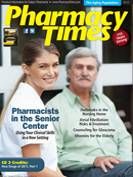Publication
Article
Pharmacy Times
Hospital Pharmacy: 5 Trends to Watch in 2012
“Less is more” may be the motto for health care in 2012, as shrinking budgets and soaring costs continue to plague hospitals across the nation. Key to overcoming those financial challenges are health-system pharmacies— and the technology that makes them tick, according to a new analysis by consultants at McKesson.
In a report released at the American Society of Health-System Pharmacists 2011 Midyear meeting in December, the group of former pharmacy directors, hospital administrators, and other experts that form the McKesson Pharmacy Optimization team highlighted these 5 trends to follow in 2012:
1. Connectivity is key. In a pay-forquality system, the need for connectivity between inpatient and outpatient settings will intensify as payers focus on the continuum of care.
2. Pharmacists are meaningful users. Hospitals must leverage pharmacists’ expertise in choosing the most effective computerized physician order entry system for their organizations. Analysts noted that, “not only do pharmacists understand how physicians order drugs in their organizations, but the pharmacy information system has the ability to help reduce transcription error and confusion.”
3. To reduce readmissions, look to the pharmacy. Nonadherence—a primary contributor to hospital readmissions—is a costly problem. With the help of technology that identifies at-risk patients, health-system pharmacists can reduce or eliminate nonadherence through effective counseling and education about the proper use of medications.
4. Cut costs and boost revenue or bust. Pharmacy directors will be asked to shoulder the responsibility for helping hospitals meet financial goals. According to McKesson Pharmacy Optimization, “the hospital pharmacy will be closely scrutinized and expected to decrease costs and increase revenues.”
5. Specialty pharmaceuticals are the future. Growth in the specialty segment is expected to range from 16% to 20% in the next few years. At an average cost of $1500 per dispense, these drugs will have a significant impact on hospital pharmacies’ revenue and profits, the report noted.
Mark Eastham, senior vice president of McKesson Pharmacy Optimization, summed up the team’s forecast: “In 2012, the hospital pharmacy will have a critical role in helping the hospital to do more with less.” PT







